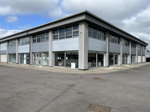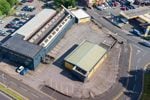In 2003 he told AM about his optimistic plans to raise sales to 8,000 in 2004 and 15,000 in 2005.
Neither happened due to supply shortages and delays to new model launches. Then, last year, Collier outlined his revised target of 5,000 units. That didn’t happen either.
Instead, retailers sold 3,240 units – and even that was behind Proton’s adjusted ‘revised target’ of 3,500, although the result was still an impressive year-on-year increase of 63%. Again, delays in getting new models was the main excuse, this time the Satria Neo.
“We changed the target because we didn’t want to affect our margins just to hit the target – we could’ve sold more but it would’ve affected profits for us and our dealers,” Collier says.
So, with five months of the year remaining, what does he hope to sell this year?
Collier considers the question thoughtfully (at the time of the interview, mid-July, Proton was down year-on-year by 3%, but has since recovered to 1.8% down).
“This year we’d be happy with sales of 3,500,” he says. “Next year is harder to predict because of uncertainty with the alliance . But we would want to achieve something like 5% growth each year.”
September’s plate-change will be crucial and Collier’s chances of meeting his sales aspirations will have been improved by putting in place annual targets for dealers for the first time in six years.
The time was right, he believes, because Proton now has a decent range of cars and is spending money on advertising.
He is also looking to grow sales by adding another 20 sites – each investing £8,000-9,000 in start up costs which should be recovered in the first year – although expected churn will mean net growth of five for a 95-outlet network by year-end.
Proton’s advertising campaign has seen enquiries rise 35%, but Collier is concerned that the conversion rate has slipped. He has reassessed the way leads are distributed, tightening up its lead management system.
An expanded field team, from three to five people, ensures that leads are followed up by dealers and coaches them to improve sales processes. Proton has set up a standard diary system across the network.
Simon Park, Proton general manager, sales and marketing says: “If we can make a 5-10% difference in the number of leads a dealer follows up, it gives a completely different picture on sales.”
Despite falling short of Collier’s target, Proton’s retail network continues to enjoy strong profits.
With sales up last year by 63% and a network increase of 35%, from 60 to 90 dealerships, average new car sales per site rose by 10-15 to 40.
Retained chassis profits average just short of £1,000 across all new cars, while network return on sales, though slightly behind last year’s 2.6%, is still well ahead of the national average, at 2.1%. Gross margins are 25%, which leaves plenty of trading profit.
New initiatives to benefit retailers, include removal of stocking costs for those who hit their targets. Half are not paying charges which removes a big cost, especially with the interest rate rises. Standards have been revised with some, such as corporate advertising and number of demonstrators, dropped.
Training requirements have changed. Now Proton sends trainers to the dealership for initial product training rather than expecting dealer staff to visit its training centre at Hethel in Norfolk, reducing costs and time out of the dealership.
In April, the dealer management system was upgraded so dealers can now track the car through the audit process, while a pilot scheme on local public relations helps them to work better with their local press.
The changes, according to Collier, are all designed to remove barriers to selling cars. “The key issues that drive this business are to make sure that dealers have enough margin to trade; that we have enough profit to make a media impact; and that we have the money to fund sensible and attractive customer offers.
“At the moment our priority is selling new cars.”
In November, dealers will take delivery of a new saloon model, scheduled for launch – usual delays notwithstanding – in January. Launched to the Malaysian market this month as the Persona (but possibly to be called Gen2 saloon in the UK), it will take the model range to five.
By the end of next year, this will rise to six, possibly with an MPV, and Proton will then start looking at showroom facilities.
Park says: “Some of our dealers are restricted, but we are realistic – we won’t force them to expand.
“However, if profits increase with the six-car line up and they make more profit in 2010 and 2011, then we would have to have a conversation with dealers about expanding their showroom facilities. But it’s profit first before growth.
Buyer profile by model
Proton has seen a change in its mix of sales. It has gone from 80% retention to 80% acquisition with greater female bias and younger buyers.
 |
 |
 |
 |
The business
Company: Proton Cars UK
Based: Hethel, Norfolk
Parent company: Proton Cars, Malaysia
Significant partners: Owns Lotus Cars
New car sales: 2007 3,500 (target)
2006: 3,240 (Jumbuck discontinued in October)
2005: 2,006
Key models: Impian, Gen2, Savvy, Satria Neo
Network size: 90 dealers
Retail ROS: 2.1%
No of open: points 30













Login to comment
Comments
No comments have been made yet.